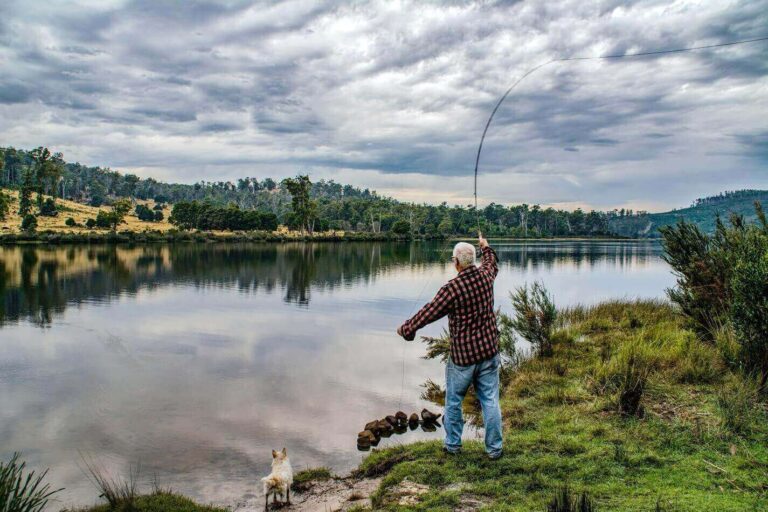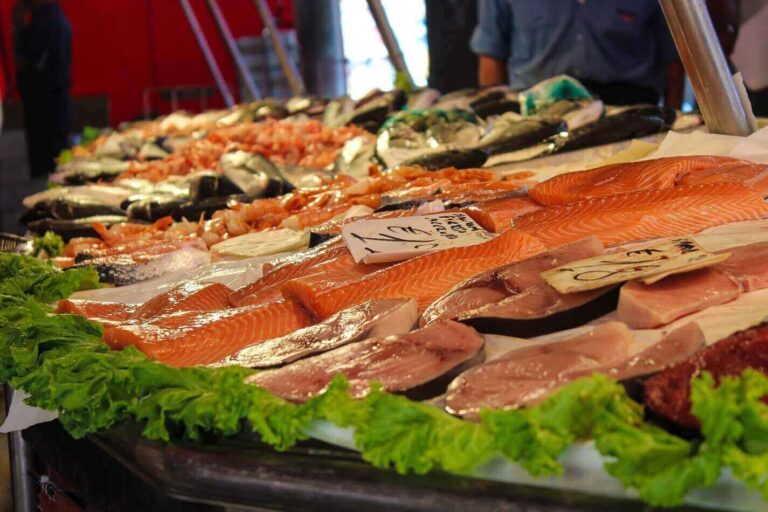is sustainable fishing possible? what does it mean?
what is sustainable fishing?
If you have read our other articles you know that we covered pretty much most of the subjects related to sustainability, but one that we haven’t talked about is fishing. But, what exactly is sustainable fishing?
A sustainable fishery is one that is harvested at a rate that does not exceed the rate of natural reproduction so that the population does not become depleted. Moreover, a sustainable fishery is also one that does not have a negative impact on the ecosystem in which it is located, this is achieved by using methods that have a low environmental impact.
This basically means that sustainable fishing is a way of fishing that attempts to minimize the impact of fishing on the environment and ensure that fish populations are not harmed by fishing activities. This is done by using techniques that are less harmful to fish and their habitat, and by carefully managing fish stocks.
This type of fishing directly opposes industrial catching that harms the sea life, depletes the sea’s natural resources, and aims to provide good-quality fish caught with the best environmentally friendly practices.
when did sustainable fishing start?
Now that you know what sustainable fishing is and what it stands for, it is time to take a look at its history, when did it start, and what it came to be to our day. Having said this here is how sustainable fishing started:
There is no one answer to this question as sustainable fishing practices have been around for centuries. However, the modern concept of sustainable fishing began to emerge in the 1970s and 1980s as a response to the growing environmental movement. Since then, sustainable fishing has become an increasingly important issue among fishermen, scientists, and policymakers.
There are many reasons why sustainable fishing started, but one of the most important reasons is that it helps protect our oceans and the creatures that live in them. When we fish sustainably, we make sure that we are not damaging the ocean ecosystem and that we are not overfishing. This means that there will be plenty of fish for everyone in the future and that the ocean will be healthy and thriving.
The oceans are a vital source of food and livelihood for billions of people. They are also one of the world’s most important ecosystems, providing a home for an immense diversity of life. But our oceans are under threat from overfishing, pollution, and climate change. Sustainable fishing is vital to preserving our oceans and the life within them. It ensures that fish stocks are healthy and can continue to provide for us into the future. It also helps to protect the habitats of marine species and the many other benefits that healthy oceans provide.
Overall, we can say that sustainability is a growing concern in the fishing industry and it has become more important than ever, with more and more people becoming aware of the consequences of their choices on the environment that surrounds them.

is sustainable fishing possible?
This question has already pretty much been answered, but we are going to go into more detail if sustainable fishing is not only possible in our world, but if it is possible to outweigh conventional fishing:
Sustainable fishing is possible if the fish population is managed in a way that ensures that it can continue to support the fishing industry indefinitely. This can be done through a combination of regulating the number of fish that can be caught, and ensuring that the fish are caught in a way that does not affect the growth of the population as a whole. So yes, sustainable fishing is possible.
The most sustainable fishing techniques are those that have the least impact on the environment and the fish population. This includes using methods that target specific fish species, using line or hook and release methods, and using nets that allow escape for smaller fish. Furthermore, sustainable fishing also includes methods that avoid bycatch, or the accidental capture of other marine species.
The main reason why fish farming is sustainable is that it does not require the use of freshwater resources. In addition, fish farming also reduces the pressure on wild fish stocks. Furthermore, fish farming can help to improve water quality and provide habitat for other aquatic organisms. it is thought that fish farming will become increasingly important in the future as a source of food and income, as well as a tool for conservation.
In conclusion, we can say that sustainable fishing is not only possible but will become increasingly important in the future, possibly even outweighing conventional fishing techniques that are sadly still overexploiting our waters.
how to choose fish sustainably
Now that you know the importance of catching sea life in a sustainable and environmentally friendly way, how all of this began, and where it is heading, let’s see how you can choose to buy fish that have been caught sustainably:
There are a few things to consider when choosing fish sustainably:
- The fish should be from a certified sustainable fishery. This means that the fishery has been independently verified to meet certain environmental and social standards.
- The fish should be from a region where overfishing is not a problem.
- The fish should be from a species that is not endangered or threatened.
- The fish should be caught using methods that have minimal impact on the environment.
The best way to choose sustainable fish is to do your research and make an informed decision. You can look up which fish are sustainable and which are not, and make your decision based on that information. You can also ask your local fishmonger for advice on which fish are sustainable and which are not. A good website to consult for sustainable fish information is the Monterey Bay Aquarium Seafood Watch.
When shopping for sustainable fish at the supermarket, look for a few key things:
- The type of fish: some species are more sustainable than others. For example, farmed salmon is much more sustainable than wild salmon.
- The source: try to buy fish that is certified by an independent organization like the Marine Stewardship Council. This ensures that the fish was caught in a sustainable way.
- The season: certain fish are only available at certain times of the year. Buying fish in season helps to ensure that they were caught sustainably.
These were some of the tips that you should follow that will ensure the sustainability of your choices when it comes to fish, with this out of the way, you can begin to reduce your carbon footprint and live a more sustainable life in other aspects, which you can learn to do by checking out the Sustainable Lifestyle category of our blog.

요약
We hope you have learned a lot today about sustainable fishing and its importance on marine life and the environment, if you want to learn about slow fashion and the problem with the fashion industry or any other really important related content, be sure to check out the articles linked below or just check out our 블로그, where we have a ton of articles that you will love too.
우리는 전 세계 사람들에게 가르칠 수 있어서 기쁩니다 🙂 또한,패스트 패션이 실제로 무엇인지, 그것이 환경, 지구, 노동자, 사회, 경제에 미치는 끔찍한 결과를 알고 계셨나요?슬로우 패션(Slow Fashion), 지속 가능한 패션(Sustainable Fashion) 운동이 무엇인지 정확히 아시나요?잊혀지고 알려지지 않았지만 매우 시급하고 중요한 주제에 관한 이 기사를 실제로 살펴보아야 합니다."패션은 지속 가능할까요?"를 읽으려면 여기를 클릭하세요.,지속 가능한 패션,윤리적인 패션,슬로우 패션또는패스트 패션 101 | 지구가 어떻게 파괴되고 있나요?왜냐하면 지식은 당신이 가질 수 있는 가장 강력한 강점 중 하나인 반면, 무지는 당신의 최악의 약점이기 때문입니다.
우리는 또한 당신을 위한 큰 놀라움을 준비했습니다!우리는 귀하에게 우리를 더 잘 알 권리를 주기 위해 우리가 누구인지, 사명이 무엇인지, 무엇을 하는지, 팀에 대해 자세히 살펴보는 등을 알려줄 회사 소개 페이지를 신중하게 준비했습니다. 것들!이번 기회를 놓치지 마시고확인하려면 여기를 클릭하세요..또한, 우리는 당신을 초대합니다우리를 좀 봐핀터레스트,지속 가능한 일상 패션 관련 콘텐츠, 의류 디자인 등 여러분이 분명 좋아할 만한 것들을 모아두는 곳입니다!
